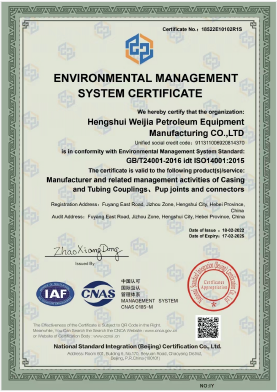- Afrikaans
- Albanian
- Amharic
- Arabic
- Armenian
- Azerbaijani
- Basque
- Belarusian
- Bengali
- Bosnian
- Bulgarian
- Catalan
- Cebuano
- Corsican
- Croatian
- Czech
- Danish
- Dutch
- English
- Esperanto
- Estonian
- Finnish
- French
- Frisian
- Galician
- Georgian
- German
- Greek
- Gujarati
- Haitian Creole
- hausa
- hawaiian
- Hebrew
- Hindi
- Miao
- Hungarian
- Icelandic
- igbo
- Indonesian
- irish
- Italian
- Japanese
- Javanese
- Kannada
- kazakh
- Khmer
- Rwandese
- Korean
- Kurdish
- Kyrgyz
- Lao
- Latin
- Latvian
- Lithuanian
- Luxembourgish
- Macedonian
- Malgashi
- Malay
- Malayalam
- Maltese
- Maori
- Marathi
- Mongolian
- Myanmar
- Nepali
- Norwegian
- Norwegian
- Occitan
- Pashto
- Persian
- Polish
- Portuguese
- Punjabi
- Romanian
- Russian
- Samoan
- Scottish Gaelic
- Serbian
- Sesotho
- Shona
- Sindhi
- Sinhala
- Slovak
- Slovenian
- Somali
- Spanish
- Sundanese
- Swahili
- Swedish
- Tagalog
- Tajik
- Tamil
- Tatar
- Telugu
- Thai
- Turkish
- Turkmen
- Ukrainian
- Urdu
- Uighur
- Uzbek
- Vietnamese
- Welsh
- Bantu
- Yiddish
- Yoruba
- Zulu
6 inch well casing coupling specifications and installation guidelines for optimal performance
Understanding the 6 Inch Well Casing Coupling A Key Component in Well Construction
In the realm of hydrocarbon extraction and groundwater drilling, the integrity and durability of the well structure are paramount. At the core of this structural integrity lies one crucial component the well casing coupling. Specifically, the 6-inch well casing coupling serves as an essential connection between segments of casing pipe, ensuring a secure and reliable framework for various drilling applications.
What is Well Casing?
Before delving into the specifics of the 6-inch well casing coupling, it’s important to understand what well casing is. Well casing is the tubular structure that is installed in the borehole of a well to provide support and protection for the wellbore. It prevents the collapse of the borehole, isolates different aquifers or geological formations, and protects the well from contamination by keeping surface water out. The casing is typically made from materials like steel or PVC, chosen for their strength, longevity, and resistance to corrosion.
The Role of Couplings
Couplings are integral to the assembly of well casing systems. They connect individual lengths of casing pipe, allowing for a customizable well depth while maintaining structural integrity. In a typical installation, multiple lengths of casing pipes are threaded together using couplings to create a single, unified structure that can withstand the pressures and stresses of drilling operations.
Characteristics of the 6-Inch Well Casing Coupling
The 6-inch well casing coupling is designed to connect 6-inch diameter casing pipes. Here are some of its primary characteristics
1. Size and Compatibility The 6-inch casing coupling is specifically designed for 6-inch casing pipes. This compatibility ensures a snug fit, minimizing the risks of leaks or structural failure during drilling operations.
2. Material Composition These couplings are often made from the same material as the casing pipes—commonly steel or PVC. Steel couplings tend to provide superior strength and resistance to external pressures, making them ideal for deep wells and challenging drilling conditions.
6 inch well casing coupling

3. Threading The coupling is usually threaded, allowing for easy assembly and disassembly. The threading can vary based on the specific requirements of the project, including standard NPT (National Pipe Thread) or API (American Petroleum Institute) specifications.
4. Resistance to Corrosion Given the environments they are often used in, 6-inch well casing couplings are typically treated or coated to resist corrosion. This is particularly important in water wells or oil fields, where exposure to moisture and chemicals can lead to premature material degradation.
Installation Process
Installing a 6-inch well casing coupling requires precision and expertise. The installation process typically involves the following steps
1. Preparation Ensure that the casing pipes and the coupling are clean and free from debris. Inspect the threading for any damage that might compromise the seal.
2. Joining the Pipes Align the threads of the coupling with those of the casing pipes. Slowly and carefully screw the coupling onto the ends of the connected pipes, ensuring that the fit is tight but not overly forceful to avoid stripping the threads.
3. Sealing After securely fastening the coupling, appropriate sealing measures must be taken to prevent leaks. This often involves applying thread sealant or tape to the threaded areas.
4. Testing Once the coupling is in place, pressure testing may be conducted to ensure the integrity of the system before moving forward with drilling.
Conclusion
The 6-inch well casing coupling is a vital component of groundwater and hydrocarbon extraction operations. Its design, material characteristics, and functionality contribute significantly to the overall performance and safety of well systems. Understanding its role not only aids in successful well construction but also enhances the longevity and efficiency of drilling operations. As technology advances, innovations in coupling design will likely continue to improve the reliability of well construction, ensuring safe and effective resource extraction for years to come.
-
Tubing Pup Joints: Essential Components for Oil and Gas OperationsNewsJul.10,2025
-
Pup Joints: Essential Components for Reliable Drilling OperationsNewsJul.10,2025
-
Pipe Couplings: Connecting Your World EfficientlyNewsJul.10,2025
-
Mastering Oilfield Operations with Quality Tubing and CasingNewsJul.10,2025
-
High-Quality Casing Couplings for Every NeedNewsJul.10,2025
-
Boost Your Drilling Efficiency with Premium Crossover Tools & Seating NipplesNewsJul.10,2025







